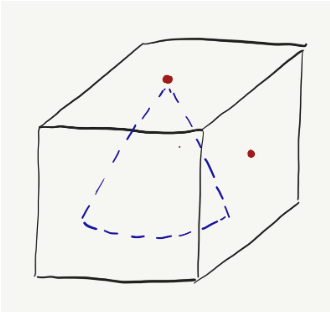
(En)lighten Your Perspective
13th Nov 2019On my recent windsurfing trip in Western Australia, I noticed an interesting social dynamic. One evening, our crew were sitting and chatting around the campfire. From memory, we were talking about the gay marriage debate that was raging in Australia a couple of years ago. Not a light subject, to be sure.
There were two people in the circle with polar opposite viewpoints. I noticed that the dynamic between those two quickly went to defending their own point of view, while trying to pick holes in the other’s. It became a raw, passionate debate, with both people trying to show that they were right, while trying to make the other person wrong.
I wondered:
- Is there truly one ‘right’ point of view in a complex issue such as this?
- What learning was going on? None, I suspect. All energy was being put into defense and attack, and none into expanding one’s own perspective.
I’m reminded of Judy Brown’s powerful Cone in the Box metaphor. Imagine there’s a box with a cone inside. But you don’t know that there’s a cone there. You can only see into the box from two perspectives. One is through a small hole at the top. The other is from a small hole on the side.
What would you see if you took the top viewpoint? You’d see a circle, and probably conclude that whatever was in there is round.
What would you see if you took the side viewpoint? You’d see a triangle, and probably conclude that whatever was in there is triangular.
In each case, you’d have a partially right view, but not the whole picture.
In a complex world, issues have many facets. To find our way through, the ability to see things from multiple perspectives matters. As leaders, our role is to facilitate others to take multiple perspectives We always only have part of the picture, and the work is to understand the fuller picture so we can find new possibilities to navigate our way.
Too often, we tightly hold our perspective as if it is the truth. I reckon that’s often because we feel the need to defend our position. Neuroscience tells us that our brain kicks into ‘fight or flight’ mode when we’re under perceived threat in social situations. In this case, the threat might be related to two aspects of David Rock’s SCARF model: Status (i.e. does my opinion count?), and Relatedness (i.e. are you friend or foe?). If either of these conditions aren’t met, we can go into defence mode. Any chance of expanding our perspective is lost.
Our workplaces and our world can drive us to staying with the familiar, working in our silo, and seeking only feedback from a few trusted sources. Yet when we step into trying to understand others perspective, new possibilities emerge. And research shows that we’re more effective as leaders.
As a leader and change maker, how you share, and how you respond, matters. Aim for being open rather than closed:
Share with humility: “Here’s what I think. I realise this is just one perspective, and I wonder what I might be missing.”
Respond with curiosity: “That’s really interesting. Can you tell me more about how you came to that point of view?
Notice how you show up every day. And make a choice to (en)lighten your perspective.
For more posts like this, explore:
Like this post? When you’re ready, here are three ways I can help you further:
- Sign up to my ‘Thinking from the Edge’ newsletter to get tips, insights and early release information that I don’t share on the usual social channels. Delivered fortnightly to your inbox.
- Get my book, Change Makers: How to make your mark with more impact and less drama. It’s available here.
- Come along to one of my Change Makers breakfast sessions to learn more about how this game-changing programme can amplify you and your people’s ability to have more impact

